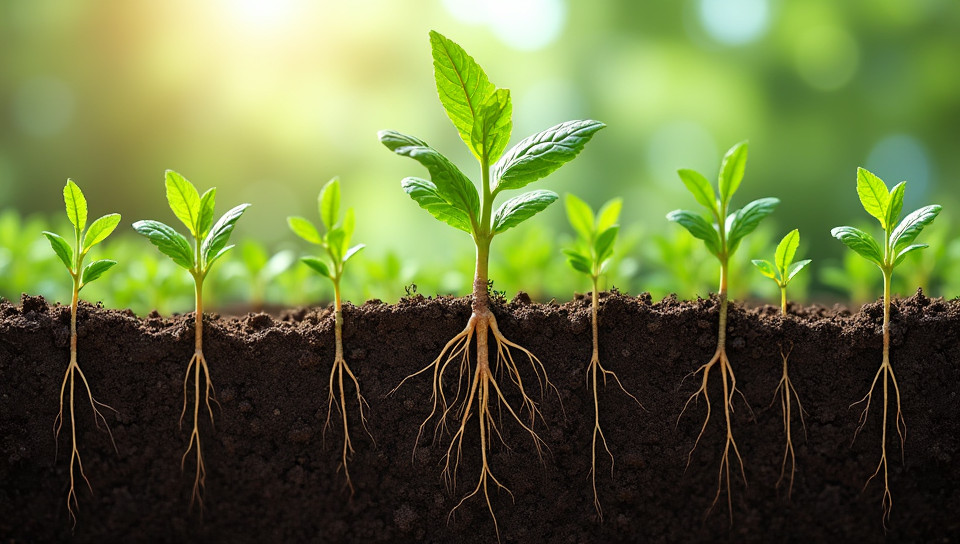Plant roots receive nutrients through a controlled system 93%

The Hidden World of Plant Nutrition
Deep beneath our feet, a complex network of roots stretches out to gather vital nutrients from the surrounding soil. This intricate system is essential for plant growth and survival, yet often goes unnoticed by those who marvel at their above-ground beauty. Plants have evolved sophisticated mechanisms to regulate nutrient uptake, ensuring they receive exactly what they need to thrive.
The Role of Roots in Plant Nutrition
Roots are more than just a means of anchoring plants in the soil; they're also highly specialized organs designed for nutrient absorption. Through a process called osmosis, roots draw water and dissolved minerals from the surrounding soil into their cells. This process is made possible by a waxy coating on root hair cells that helps to prevent water loss.
The Structure of Plant Roots
Plant roots can be broadly categorized into two types: primary and secondary roots. Primary roots grow downward from the seed, while secondary roots grow outward in all directions from the base of the plant. This branching structure allows plants to cover a larger surface area, increasing their chances of absorbing essential nutrients.
How Plants Regulate Nutrient Uptake
Plants have developed a range of mechanisms to control nutrient uptake and prevent over- or under-absorption. For example, roots can release chemical signals into the soil to recruit beneficial microorganisms that help break down organic matter and make nutrients available for absorption.
- They also adjust their root growth in response to changing environmental conditions, such as drought or nutrient scarcity.
- In addition, plants have developed complex signaling pathways that allow them to sense changes in nutrient availability and adjust their nutrient uptake accordingly.
Conclusion
The intricate system of plant roots is a testament to the remarkable adaptability and resilience of plants. By understanding how they regulate nutrient uptake, we can gain valuable insights into their growth and development, ultimately improving our ability to cultivate healthier, more sustainable crops. As we continue to grapple with the challenges of climate change and food security, appreciating the complex biology of plant roots is more crucial than ever before.
- Created by: Mùchén Chu
- Created at: Feb. 1, 2025, 2:12 p.m.
- ID: 19852




